There are many different options to choose from when it comes to the flooring of a basketball court, outdoor, or indoor basketball. You want a durable surface that can withstand the rigors of constant use. You also need a surface that provides good traction and shock absorption. Nevertheless, choosing the right basketball court flooring can be burdensome. The options are endless, from outdoor and indoor basketball carpeting to synthetic court surfaces. In this blog post, we will discuss some of the things you will consider when choosing the best basketball court flooring. Before that, let’s look at the basics of basketball courts.
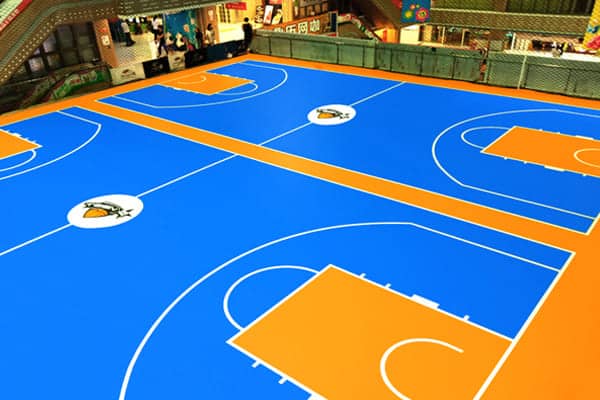
The Basics of Basketball Courts
Basketball courts are the playing surface for the popular sport of basketball. The court is rectangular and measures 94 feet (29 meters) from end to end and 50 feet (15 meters) in width. The two free throw lines are 15 feet (4.6 m) from each sideline, and the top of the key is 10 feet (3 m) above the floor. The basket itself stands 10 feet high, 4 inches below the top of the backboard.
The center circle is 12 feet in diameter, with a 5-foot radius. It has a line that divides it into halves, every 3 feet in length and extending 7½ inches from each sideline. The foul lane extends 6 feet beyond each baseline and divides the court into three sections: you have one-third of your team’s side of the court, and they have two-thirds on their side at all times.
The foul line is located 18 inches outside each free throw lane diagonally opposite one another at midcourt; this gives you approximately 54 square yards or 47 square meters to play on.
The color of your basketball court flooring does not matter as long as it is a light color. This color will help the players see the ball better and make it easier for the officials to call fouls. The flooring should also have some sort of graphic or design on it to indicate where the various boundaries are located. The inner rim is in bright orange paint, and the outer edge is white with no lines on it except for the three-point line, which is painted on it in white paint about 14 inches wide with an orange background and black line separating them both equally at 15 feet 9 inches from each baseline.
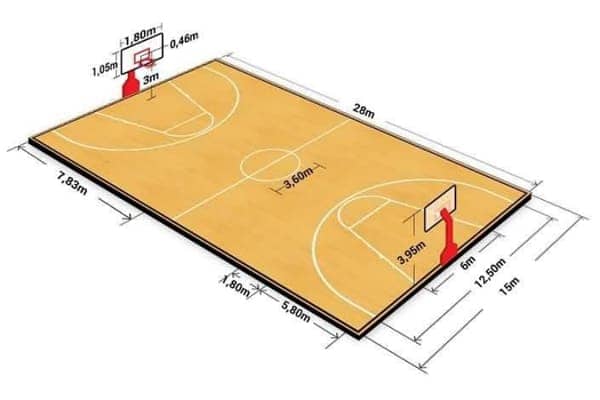
Factors of choosing basketball court flooring
The court flooring is also important in a basketball game because it determines the performance or how well the players can play the game.
There are different types of basketball court flooring available in the market today. Each type has its characteristics and features that make it unique from the rest. The following are some of the things you should look for when purchasing indoor or outdoor basketball court flooring:
Durability
The first thing you need to look into for either outdoor or indoor basketball flooring is durability if you want your court flooring to last forever. You do not want to spend money on something that will only last for a short period and then break down immediately after use. You need to choose a basketball flooring that will be durable enough for many years with minimal maintenance required from time to time.
Cost
Another thing that you need to consider is the cost of your basketball court flooring. There are many models today, but some basketball flooring may cost more than others, depending on their features and quality. Suppose you want a basketball flooring that is affordable yet effective at the same time. In that case, you should go for something simple yet durable and versatile enough for various uses (indoor basketball court or outdoor basketball court use).
Ease of installation
Suppose you’re installing your basketball court, either an indoor basketball court or an outdoor basketball court. In that case, ease of installation is an important factor to consider because it will affect how much time and effort it takes to complete the project properly. Some materials require professional installation on the surface, while anyone with basic carpentry skills can install others.
Quality
Quality is another important factor when deciding what kind of basketball sports flooring material you want to install in your gymnasium or school gymnasiums. A high-quality system will withstand heavy use without breaking down easily or wearing out quickly. A good quality court flooring will give players the best performance.
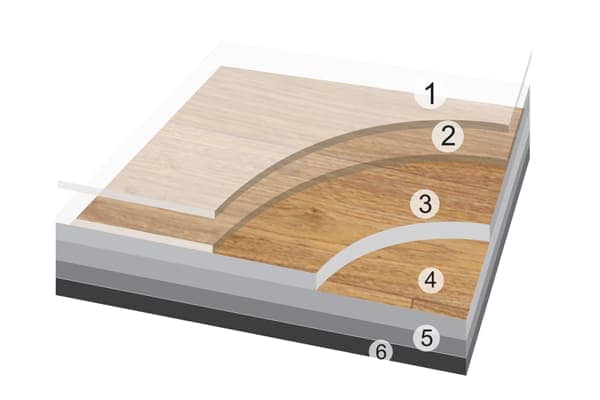
Warranty
A warranty on your court flooring lets you have peace of mind knowing that if anything happens with your floor within a certain period after purchase, you can have it repaired or replaced for free.
Maintenance
Maintenance is another factor that should be considered when purchasing a basketball court surface. If done properly, it will help increase the lifespan of your court flooring system and allow it to last longer than expected. Proper supervision will include cleaning, conditioning, and repairing any damage that may occur over time due to wear and tear or weather conditions.
Budget
You need to set a budget and stick with it so that when you go shopping for your basketball flooring, you know how much money you want to spend on it and what type of flooring would best suit your needs and budget.
Size
The size of the court needs to be taken into consideration because this will determine how many players can play at one time and how much space is required for the game.
What are the material classifications of a basketball court flooring?
The material classifications of a basketball court flooring are as follows: hardwood, concrete, asphalt, rubber and synthetic.
Hardwood Sport Flooring
Hardwood is a common material for basketball sports floor in both indoor and outdoor settings. These floors are another popular option because they have a classic look that blends well with many different types of architecture. They are also much cheaper than concrete floors and you can install them over existing surfaces such as asphalt or concrete. The most common type of wood used for basketball are maple and red oak. Oak floors are popular because they are durable and resistant to moisture damage. Maple floors are easy to maintain and clean, while red oak is often preferred by homeowners because it is less expensive than other types of hardwood flooring.
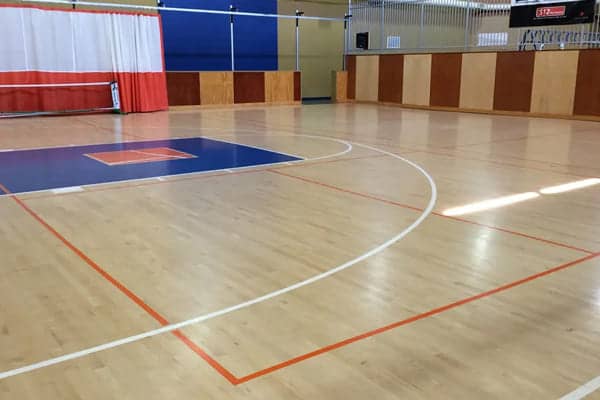
Concrete Courts
Concrete is another popular material for building basketball court floor because it can withstand heavy traffic from players. Concrete also has an appealing appearance that makes it suitable for both indoor and outdoor settings. Concrete can be textured to look like different kinds of stone or brick, which adds an extra layer of durability against scratches and stains caused by dirt and water splashing on the surface during playtime. Concrete also provides traction so players do not slip easily when moving around on their feet during play time in order to avoid injuries that could result from falling. Concrete floors are the most durable, but they are very expensive to install.
Asphalt courts
Asphalt is a type of black sticky rock that comes from under the ground in liquid form. When it dries, it becomes hard and solid. Asphalt court flooring is usually cheaper than concrete ones, but it is not as durable or long-lasting. Asphalt flooring is also harder to maintain because it’s porous and absorbs water quickly.
Rubber flooring
Rubber flooring is a great option for basketball sports floor. It is cost effective and can be installed quickly. A variety of rubber flooring options are available, including indoor/outdoor, interlocking and rolled. The type of surface you choose will depend on how often you play and the level of play in your area. Each type has its own pros and cons, so it’s important to consider factors like durability, cost, maintenance and installation before selecting a specific product.
Indoor/Outdoor Rubber Flooring
Indoor/outdoor rubber flooring is made from recycled tires that have been ground into particles. These particles are mixed with other materials such as sand or recycled tire crumb rubber (RTCR) before being poured into molds and cured to form a solid shape. Once cured, this material is durable enough for commercial use but flexible enough for residential applications. Indoor/outdoor rubber floors come in a variety of colors and shades that match any design scheme or playing environment. They are available in different sizes to accommodate a range of activities from basketball sports to volleyball or gymnastics. The color options also allow you to customize your court with logos or graphics if desired.
Interlocking Rubber Tiles
Interlocking Rubber Tiles are a great alternative to rubber matting for basketball, gyms and playgrounds. The tiles are made from 100% rubber and can be installed directly onto concrete or asphalt surfaces. They are ideal for indoor and outdoor applications, including basketball courts, gyms, playgrounds and even home gyms. The tiles are easy to install and they provide a safe, durable surface that will last for years!
The tiles also come in many different sizes so you can customize your court to any size you desire. The interlocking design ensures that the tiles stay firmly in place while allowing them to easily be removed if necessary.
When you install interlocking rubber tiles as your court surface, you’ll have a safe and durable playing area that will stand up to frequent use without any signs of wear or tear! The tiles also come with an anti-skid backing which helps prevent slipping when playing on the court surface.
Synthetic Sport Flooring
Finally, there are Synthetic floors. These floors are polyvinyl chloride (PVC) and polyurethane (PU) floors. You can install them over concrete or asphalt surfaces but you may need additional protection if you install them in wet areas such as swimming pools or locker rooms.
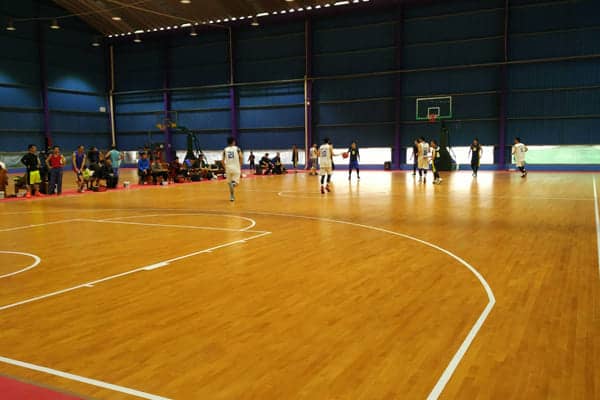
Polyvinyl Chloride Sport Flooring
Polyvinyl Chloride materials, also known as PVC floors, are preferable for many benefits. Vinyl court flooring is a synthetic flooring system that looks and feels like wood but is much more durable. It’s also easy to clean and maintain. PVC Sport Flooring are the most popular basketball court flooring material due to its durability and low maintenance. PVC Sport Flooring is a plastic flooring which is durable, easy to clean, and has a high impact resistance.
You can choose the right color and pattern according to your needs. The thickness of the product and the thickness of the wear-resistant layer directly affect the price and service life of the product.
The resulting product is often used as an alternative to concrete in many different applications such as playgrounds, driveways and other types of interior/exterior flooring projects where durability and low maintenance are important considerations.
Polypropylene Basketball Court Flooring
Polypropylene Basketball Court Flooring is a high quality product that can be used to build basketball courts and other sports facilities. It is made from durable materials that are resistant to wear and tear. The flooring is designed to be used for both indoor and outdoor courts.
The flooring has a smooth surface that makes it easy for players to run and jump. The material does not absorb moisture, which means it remains dry even after long periods of use. This floor also reduces the risk of slipping or tripping on wet floors, which can result in serious injuries during games.
The polypropylene basketball court flooring comes in different colors and sizes, so you can choose the one that suits your needs best. The tiles are easy to install because they come with interlocking connectors that allow them to be set up quickly without requiring any tools or adhesives. They can also be removed easily if necessary, so if there are any repairs needed you won’t need to rip down the entire court just because one tile broke down or got damaged somehow by accident during play or by wear and tear over time over time due to repeated use.
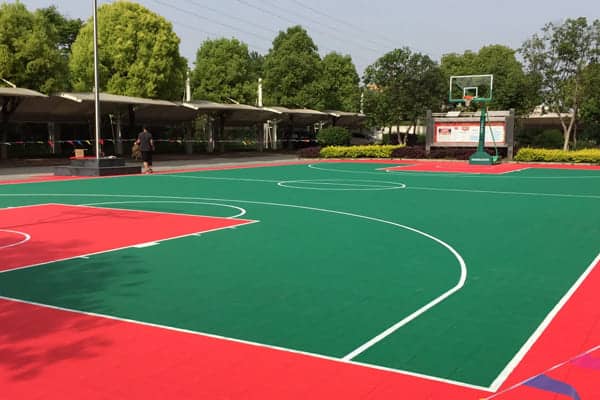
The Best Basketball Flooring Options
There are many different options for outdoor and indoor basketball court flooring. You need to consider the durability, cost, and maintenance of the different flooring materials before you decide.
The most common basketball court flooring materials are wood, rubber, asphalt, PP and vinyl. They all have their advantages and disadvantages, but vinyl is probably the best choice. It’s lasting, easy to install and maintain, and reasonably affordable.
Wood flooring is the traditional choice for many basketball courts. It’s easy to install and maintain, but it’s not as durable as some other options. Wood flooring can be damaged by water, and they’re also susceptible to scratches and dents.
Rubber flooring is good for indoor basketball courts because it absorbs shocks well. It’s also popular for outdoor courts because it can withstand ultraviolet radiation from the sun better than other materials. Rubber is also soft enough that players don’t get hurt when they fall on it too hard during games.
However, rubber isn’t as reliable for some sports as other options like PVC or asphalt. So it needs to be replaced more often than those other options do if it gets damaged by damage or wears and tear over time. Rubber flooring also tends to be more expensive than PVC or asphalt flooring.
Asphalt is the most common outdoor basketball court flooring type because it’s sturdy and can withstand all kinds of weather conditions. Asphalt is also easy to install and maintain, but it doesn’t have the same cushioning level as rubber or vinyl. Players might not like playing on it as long as they’re looking for a softer surface to land on when they make jump shots or other plays during any other game on the court.
The advantages of vinyl flooring
The flooring of a basketball court has to be lasting, safe, and comfortable. Vinyl flooring is the best option. It is available in different colors, textures, and sizes.
Vinyl is made from polyvinyl chloride (PVC), a polymer containing chlorine atoms. The material is produced by compounding vinyl chloride monomers with other ingredients to produce different vinyl products such as glass fiber, foaming agent, etc.
The main advantages of using this type of flooring for outdoor basketball courts are:
Durable:
PVC tiles can last for years without losing color or quality. They don’t absorb moisture easily and are resistant to scratches, stains, and dents. If properly maintained, these floors will wear very well even after years of use by players wearing shoes with cleats or spikes during games.
Easy to install and maintain:
Basketball courts made of PVC tiles don’t require much when it comes to installation or care. The installation is quick by rolling out the sheet and cutting it to fit the dimensions of the court area. Once in place, these tiles can be cleaned easily using a broom and mop without the need for harsh chemicals or cleaners that might damage the surface.
Comfortable:
PVC tiles are softer than concrete, asphalt, or wood, so they provide a more comfortable surface for players to land on when making jump shots or other plays during games. This kind of court can help reduce the risk of injuries sustained by players if they fall hard while playing on the court.
As you can see, there are many different things to consider when you’re trying to choose the best flooring for your basketball court. You need to think about the cost, durability, installation, expenditure, and player comfort level before making a final decision. PVC tiles are usually the best choice because they are durable, easy to maintain, and reasonably priced.
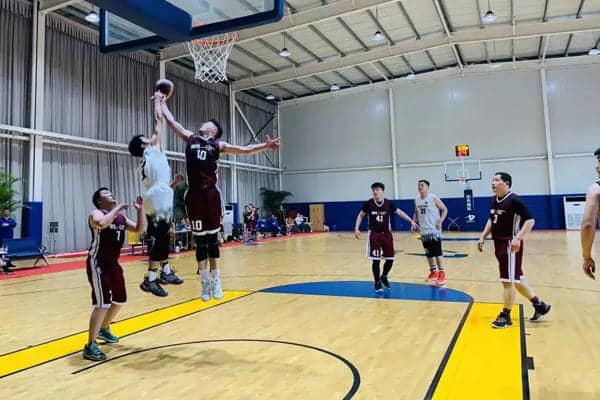
The application of vinyl basketball courts in international competitions
Vinyl tiles have been used in international competitions such as the Summer Olympics, World Championships, and FIBA World Cup.
The facilities that use this type of flooring are:
– Basketball Arena in Barcelona, Spain
– Beijing National Indoor Stadium in China
– Palau Sant Jordi in Spain
– Verizon Center in Washington, D.C., United States
– Madison Square Garden in New York City, United States
– Toyota Center in Houston, Texas, United States
– Philips Arena in Atlanta, Georgia, United States
Choose one with good quality materials like those produced by bantrofloor.com. You can be sure that your indoor or outdoor court will provide many years of enjoyment for players and spectators alike while also meeting the requirements set by international governing bodies for Basketball competitions.
How to install and approximate cost
Installation of a PVC basketball court is a relatively easy process that most do-it-yourselfers can do on weekends. The first step is to level the ground where you plan to install the court. Use a laser level or string line to achieve this step and make sure that the ground is level around the perimeter of the court area.
After the ground is level, you can start laying down the base material that helps with drainage and keeps the PVC flooring from shifting or moving around when players use it. Once the base material is in place, you can start rolling out the PVC sheets and cutting them to fit the dimensions of your court.
You will need to use a special adhesive to glue the PVC sheets down, and then you can install the basketball goals, lines, and other markings on the court.
So, there you have it! Now you know everything you need to about how to choose and install the best flooring for your basketball court. Whether you’re looking for a durable, easy-to-maintain surface perfect for competitive play or want something that looks good and is fun for your kids to use, vinyl is the way to go!
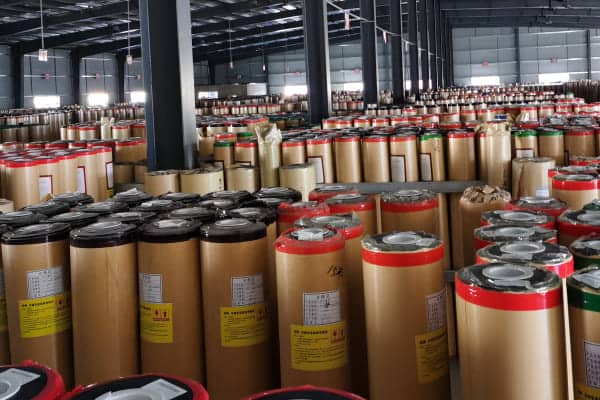
Don’t forget to check out our website for more tips on choosing and installing the perfect outdoor or indoor basketball court for your home. Bantrofloor is the leading provider of high-quality flooring. We offer two types of basketball court flooring: indoor and outdoor. Outdoor sports floors are made from pp material that resists impact, wear, shock, and tear to last for years of use. Indoor sports floors are made from a synthetic vinyl material that provides excellent traction so players can perform at peak performance levels during games or practice sessions with minimal slipping or sliding.
Bantrofloor offers great customer service, and you can contact us anytime if you have any questions or concerns about our products or services. Our vinyl flooring for the basketball court is the perfect solution for your indoor or outdoor court needs. We offer a variety of colors and styles to choose from. Contact us today to learn more about our products and services, or visit our website to browse.


